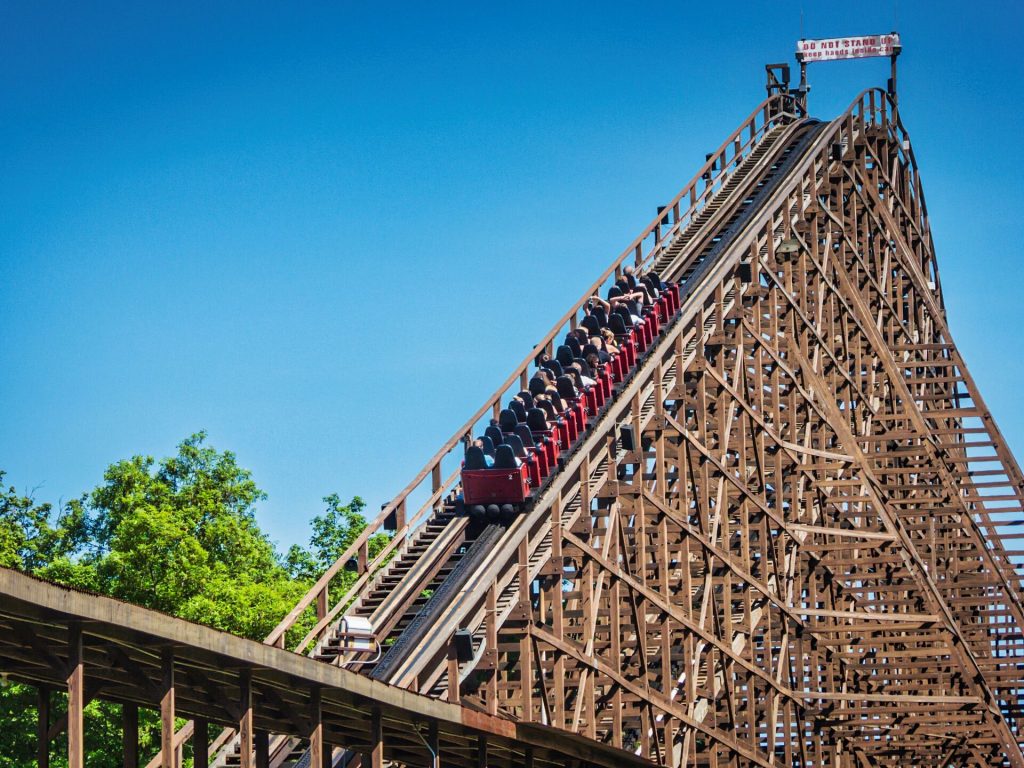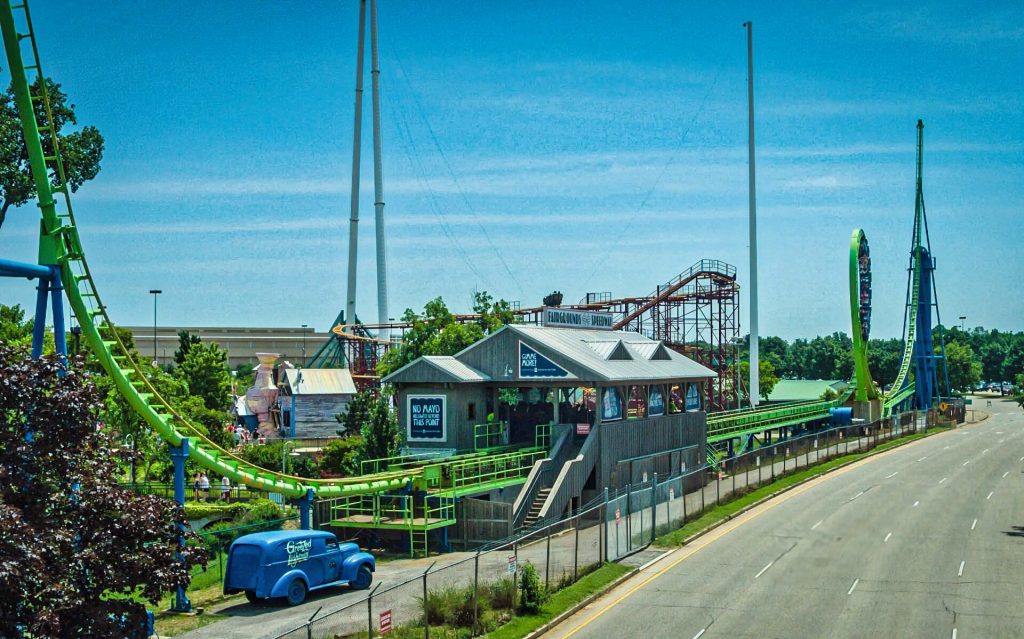From humble beginnings to dominating modern theme park skylines, roller coasters are steeped with a rich history of technical advancements. Here’s a timeline of many highlights that influenced the development of roller coasters throughout the years.
On April 14, 1979, The Beast opened at Kings Island in Ohio, USA, as the world’s tallest, fastest, longest roller coaster. Featuring more than 1.4 miles (2.25 km) of track, it remains the longest wooden coaster to this day.
In 1977, three Schwarzkopf shuttle loop coasters – King Kobra, White Lightnin’, and Greased Lightnin’ – opened in the USA as the world’s first launched roller coasters using a 50-ton counterweight to propel the ride forward.
Schwarzkopf teamed up with Intamin to design Revolution at Six Flags Magic Mountain in California, USA. The coaster opened on May 8, 1976, and featured the first clothoid loop, which produced less intense g-forces than a circular vertical loop.
Focused on continuing to push the boundaries of steel roller coaster design, Arrow Dynamics debuted the first modern inversion in 1975 with the Corkscrew at Knott’s Berry Farm in California, USA.
Roller coasters reentered as the focus of amusement parks in 1972 with the opening of Kings Island in Ohio, USA, which featured The Racer as a central attraction.
Werner Stengel first worked with Anton Schwarzkopf in 1963 to help design the first few Schwarzkopf roller coasters. Stengel recognized how important design was to the coaster industry, which encouraged him to found his Engineering firm in 1965.
Walt Disney opened Matterhorn Bobsleds, a mountain-themed toboggan coaster, in 1959 at Disneyland in California, USA. The steel track design was the first of its kind, using a tubular design that allowed for train wheels to maintain closer contact with the track, creating a smoother ride.
Nightmare opened at Joyland in Kansas, USA, as John C. Allen’s first roller coaster. Allen would go on to design many beloved wooden coasters including Blue Streak at Cedar Point and Racer at Kings Island in Ohio, USA.
Following up on his 1926 patent, former British aviator John Norman Bartlett worked with John A. Miler to design and build Flying Turns, a Bobsled Coaster where the train free-wheels through a trough/chute at Lakeside Park in Ohio, USA.
During the economic high times of the roaring twenty’s, there was a massive explosion of roller coasters, with more than 300 built throughout the decade. Many of these were based on John A Miller’s new Upstop Wheel design that ensured the train would stay on the track.







